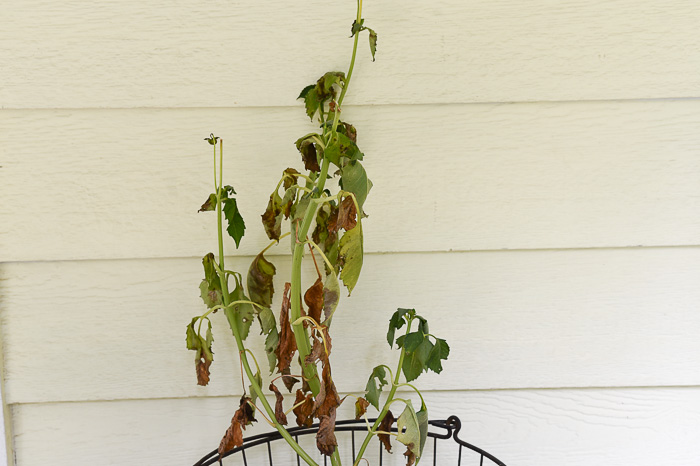Recognizing What Plants Don't Like Epsom Salt for Healthier Gardens
Recognizing What Plants Don't Like Epsom Salt for Healthier Gardens
Blog Article
Explore Why Some Plants Reject Epsom Salt as a Nutrient Source
In the elaborate globe of plant nourishment, the denial of Epsom salt as a viable nutrient source by some plants postures a fascinating conundrum. The reasons behind this careful behavior dig right into a complicated interplay of plant absorption mechanisms, the special chemical framework of Epsom salt, and plant-specific nutrient preferences.
Plant Absorption Systems
In delving into the intricate realm of plant absorption mechanisms, it becomes apparent that the process is governed by an advanced interplay of molecular pathways and physical characteristics. Plants take in nutrients mostly through their origins, making use of numerous transportation systems to uptake crucial components such as nitrogen, phosphorus, potassium, and magnesium. Magnesium, a vital part in chlorophyll synthesis and enzyme activation, plays a crucial duty in plant growth and growth.
The absorption of magnesium includes a number of actions, starting with its availability in the dirt service. As soon as liquified, magnesium ions are used up by plant roots with particular transport proteins installed in the cell membranes. These healthy proteins help with the movement of magnesium throughout the origin cell walls and into the plant's vascular system, where it is after that dispersed to various cells to support numerous physiological features.
Recognizing the detailed systems behind magnesium absorption in plants sheds light on just how this important nutrient adds to overall plant wellness and productivity. By optimizing magnesium uptake paths, cultivators can enhance crop yields and top quality, highlighting the relevance of comprehending plant absorption characteristics for lasting farming practices.
Epsom Salt Chemical Framework
The chemical structure of Epsom salt, likewise known as magnesium sulfate heptahydrate, discloses an unique setup of aspects that add to its one-of-a-kind homes and applications. The seven water molecules are freely adhered to the magnesium sulfate substance, permitting it to liquify easily in water and be easily taken up by plants with their origins.
The crystal framework of Epsom salt forms monoclinic prisms, which are elongated crystals with parallel ends. This crystal form influences the physical homes of Epsom salt, such as its structure and solubility. Understanding the chemical structure of Epsom salt is essential for comprehending its habits as a nutrient source and its communications with plants in farming and horticultural practices.
Plant-Specific Nutrient Preferences
Plants display distinctive choices for details nutrients, emphasizing the relevance of comprehending their specific needs for optimum growth and advancement. These preferences are dictated by numerous variables, consisting of the plant types, stage of growth, ecological problems, and dirt make-up. Some plants may prosper in nitrogen-rich dirts, while others need more phosphorus or potassium for healthy and balanced growth. Recognizing these plant-specific nutrient preferences is essential for making best use of plant yields, boosting decorative plant growth, and advertising general plant health - what plants don't like epsom salt.

Plant-specific nutrient choices can additionally vary based on whether the plant is a monocot or dicot. By tailoring nutrient supplements to meet the specific demands of each plant species, cultivators can optimize plant development, reduce nutrition waste, and assistance sustainable farming methods.

Soil Ph and Nutrient Uptake
Soil pH plays a critical function in figuring out the accessibility of necessary nutrients for plant uptake. Acidic dirts with a reduced pH are desirable for plants like azaleas and blueberries, while alkaline soils with a higher pH match plants such as lavenders and clematis.
On the various other hand, alkaline soils might limit the availability of nutrients like copper, zinc, and iron, impacting plant growth. Maintaining the ideal pH level in the dirt is important for ensuring that plants can successfully uptake the needed nutrients for their healthy look at this web-site and balanced advancement and productivity.
Hereditary Consider Nutrient Uptake
In the realm of plant nourishment, the interplay of genetic aspects considerably moved here influences the uptake of vital nutrients crucial for plant development and growth. Hereditary factors play an essential duty in forming a plant's ability to take in and use nutrients efficiently. Variants in genes can impact the expression of transport proteins in charge of relocating nutrients throughout cell membrane layers. These transport proteins, such as networks and carriers, are inscribed by specific genes that can differ among plant types or also within the same varieties.
Furthermore, hereditary factors likewise figure out the performance of nutrient uptake systems within plants. For example, some plants might have genetic qualities that improve their capability to feed on nutrients from the dirt successfully, providing a competitive advantage in nutrient-poor atmospheres. On the other hand, genetic variants can likewise cause limitations in nutrient uptake, making specific plants much more vulnerable to deficiencies even when nutrients are abundant in the dirt.
Recognizing exactly how hereditary aspects influence nutrient uptake is essential for developing strategies to maximize plant nutrition and enhance crop performance in numerous agricultural setups. By deciphering the genetic devices involved in nutrient uptake, scientists can work towards establishing genetically improved plant varieties with boosted nutrient acquisition capacities.
Final Thought

In the detailed world of plant nourishment, the being rejected of Epsom salt as a feasible nutrient resource by some plants poses a fascinating quandary. what plants don't like epsom salt. Comprehending these plant-specific nutrient choices is essential for making the most of crop returns, enhancing ornamental plant development, and promoting total plant health
By tailoring nutrient supplementation to meet the precise demands of each plant species, cultivators can optimize plant development, reduce vitamins and mineral waste, and support sustainable farming techniques.
In the realm of plant nourishment, the interplay of hereditary aspects considerably influences the uptake of necessary nutrients important for plant development and growth. Recognizing these complexities in plant nutrient uptake is essential for maximizing plant development and wellness in farming practices.
Report this page